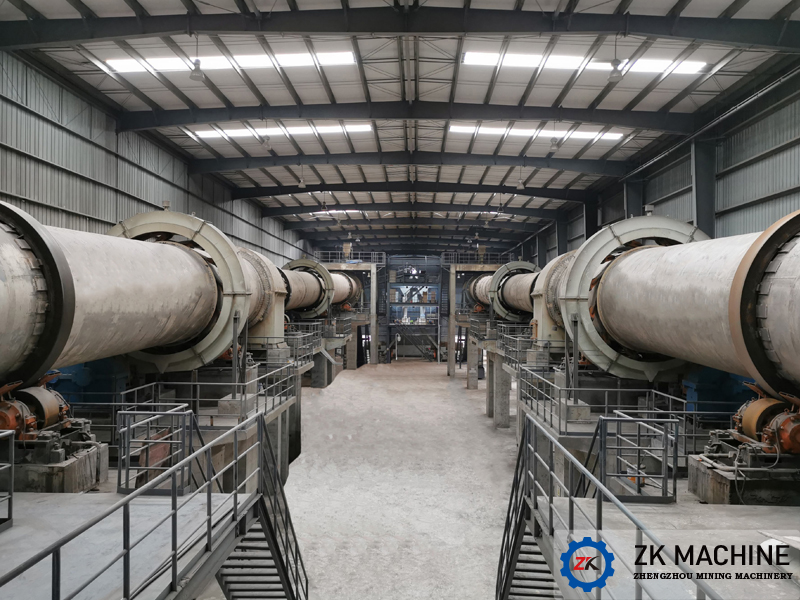The influence of municipal sludge on the firing of ceramsite
Date:2021-09-26 15:02:46
Author:admin
Views:
164
Municipal sludge comes from domestic sewage treatment plants. The sludge in different cities is different due to different living habits, water sources, water quality, and treatment processes. Generally speaking, biologically activated sludge is composed of a large amount of water and solid matter. The moisture content of the sludge is generally 80% after delivery, and it can reach 60% after press filtration; The solid matter contains 30% inorganic components and 70% organic components.
According to the analysis of the Riley phase diagram drawn by American scientists, the best material chemical composition distribution ratio is obtained through experimental research. SiO2 is 50%-65%, Al2O3 is 10%-22%, and Fe2O3 is 5%-9%.
The chemical composition of sintered ceramsite raw material:
|
Chemical Composition |
SiO2 |
Al2O3 |
Fe2O3 |
CaO+MgO |
K2O+Na2O |
|
Content% |
50~65 |
10~22 |
5~9 |
4~15 |
2~5 |
The main inorganic components of sludge are SiO2, Al2O3, and Fe2O3, which are similar to sandy soils found in natural clay, loam and shale. The main chemical components in each raw material play a very important role in the firing of sludge ceramsite.
1. SiO2 type
The higher the SiO2 content, the stronger the hardness of the ceramsite, and the stronger the practicability. However, the higher the SiO2 content, it will increase the melting temperature, increase the viscosity of the liquid phase, make it difficult to sinter, and deteriorate the swelling performance.
2. Al2O3 type
Al2O3 can improve the chemical stability and thermal stability of ceramsite, and improve the physical and chemical properties and mechanical strength of ceramsite; Too high content is not conducive to expansion at high temperature, which will increase the firing temperature and waste energy; if the content is low, the raw material has poor plasticity and low strength.
3. Fe2O3 type
Fe2O3 participates in the gas production process. When the ceramsite is in a reducing atmosphere, Fe2O3 produces a series of chemical reactions with C and CO to generate gas and expand the ceramsite.
4. Alkali metals
Alkali metals mainly include K2O, Na2O, CaO, MgO, etc., which are good fluxes, which can widen the calcination range and facilitate sintering.
5. Organic matter
The role of organic matter in the high-temperature sintering process of sludge has the following schemes: a. Increasing foaming substances will help the formation of micropores in the product; b. The formation of micropores and the increase in porosity will be too large for the expansion range of the raw materials; c. At high temperatures, the residual carbon inside the ball will react chemically with iron oxide to generate gas.
In the process of firing ceramsite from sludge, factors such as sludge content, firing temperature, and roasting time will all have an impact on the performance of sludge ceramsite.
1. The amount of sludge mixed
The sludge contains a large amount of organic matter that can provide part of the heat, and can also provide the carbonaceous material needed for the expansion of ceramsite.
There is enough CO2 gas inside the ceramsite to make it expand during firing. Therefore, the amount of sludge mixed in is small and the coefficient of expansion is low; However, the water content of the sludge is very high. The ceramsite pelletizing process has certain requirements on the plasticity of the raw meal. Too much mixing will cause the raw meal to be difficult to form and reduce the strength.
2. Firing temperature
When the ceramsite firing temperature is about 1150℃, a large amount of high-strength SiO2, CaO and other molten liquid phases are produced, and the sintered body shrinks and densifies. When the temperature continues to rise, the sludge contains organic residues of C and iron oxides to generate a large amount of gas. When the sintering temperature is too high, the gas overflows, resulting in larger pores on the surface, and the water absorption rate of the ceramsite increases.
In summary, the use of municipal sludge as a raw material to prepare ceramsite has a positive impact on ceramsite.

